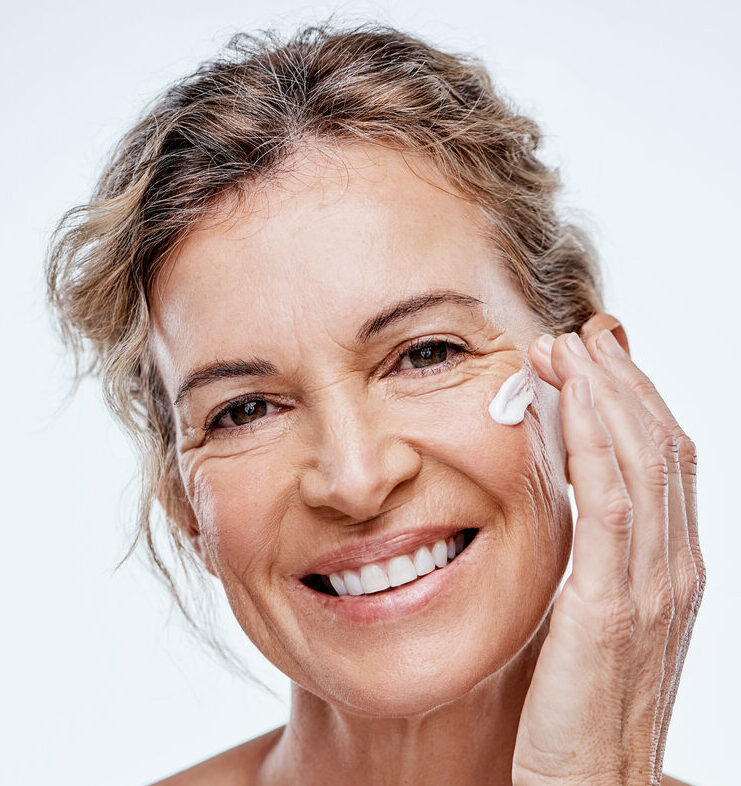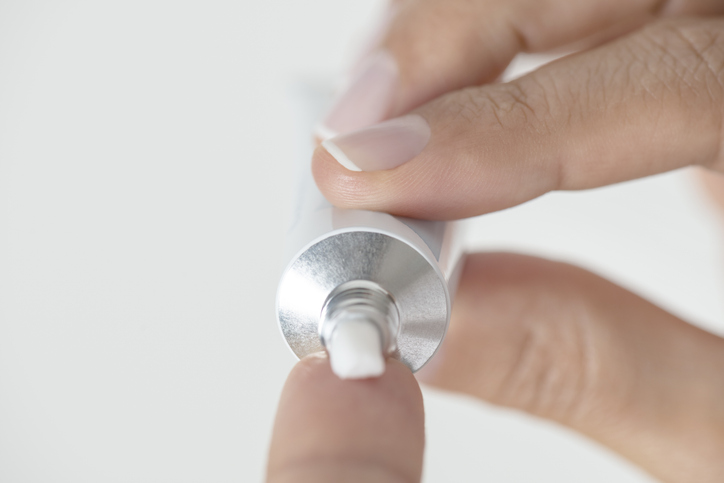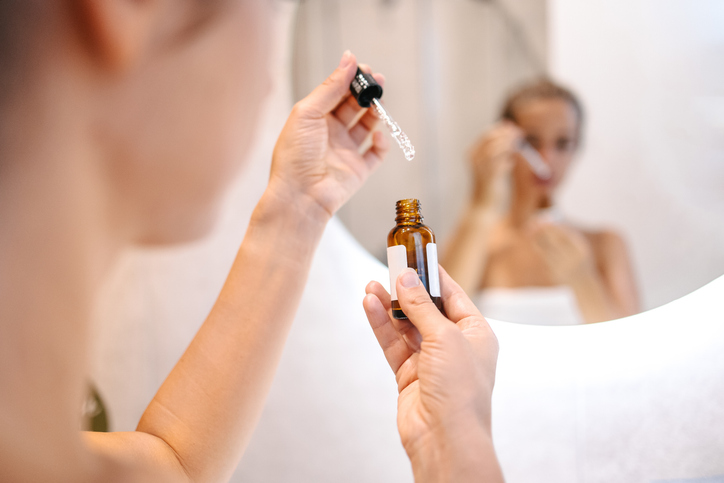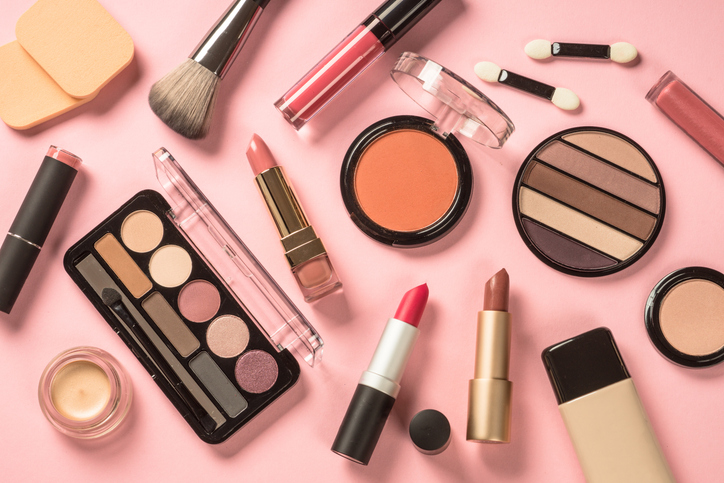Acne can be a challenging issue to tackle, whether you’re in your teens or adulthood.…

Common Skin Care Prescriptions for Aging Skin
Our skin changes with age; in our 30s, 40s, and older years, fine lines begin to show, sun damage is more apparent, and our skin may no longer plump up as it once did. Drugstore cosmetics can be helpful, but occasionally, we need something stronger to maintain the finest possible appearance of our skin. Here come skin care prescriptions: potent anti-aging treatments that are suggested by professionals.
This article will dissect the most popular skin care recommendations for aging skin and show you how to apply them to your regimen for radiant and obvious results.
Why It’s Worth Considering Prescription Skin Care
When you reach your 30s and 40s, you may discover that your typical skin care regimen isn’t working. So, that’s when skin care prescriptions come in handy. These dermatologist-recommended treatments can target aging concerns like wrinkles, sun damage, and sagging skin in a way that over-the-counter products often can’t. Think of them as the secret weapon in your skin care arsenal.
Prescription products are more robust, more effective, and tailored to your specific skin needs so that you can target those stubborn areas—like crow’s feet or dark spots—with profound results. Plus, having a dermatologist guide you means you get a personalized skin care plan that works for your skin.
Go-To Skin Care Prescriptions for Aging Skin
1. Retinoids (Tretinoin, Retin-A)
If you’ve heard about retinoids, you know they’re often called the gold standard for anti-aging. This skin care and prescription can speed up skin cell turnover, helping to smooth out fine lines and wrinkles, fade dark spots, and improve overall skin texture. Most dermatologists believe it’s one of the most powerful tools in a skin care prescription lineup.
Why You’ll Love It:

- Reduces fine lines and wrinkles
- Restores collagen production
- Evens out skin tone and texture
- Fades dark spots from sun exposure or aging
How to Use It:
Retinoids can be harsh, especially for those who have never used them before, so start off slowly by applying them once or twice a week and then progressively increasing the dosage as your skin adjusts. Never wear them without a quality moisturizer on.
2. Hydroquinone
A go-to skin care prescription to target those pesky dark spots that won’t go away. Whether it’s melasma, sunspots, or post-acne marks, hydroquinone lightens pigmentation by slowing down the production of melanin (the pigment that gives our skin its color).
Why You’ll Love It:
- Fades dark spots and hyperpigmentation
- Evens out your overall skin tone
- Tackles stubborn sun damage
How to Use It:
Apply it directly to problem areas, usually once or twice a day. Protect your skin with sunscreen during the day even as the cooler months are approaching, as exposure to UV rays can make pigmentation worse.
3. Azelaic Acid
A gentle prescription that tackles everything from acne to pigmentation and rosacea. This ingredient might be a game-changer if you’re dealing with inflammation, redness, or uneven skin tone.
Why You’ll Love It:
- Soothes inflammation and redness
- Fades hyperpigmentation
- Improves skin texture and tone
- Great for sensitive skin types
How to Use It:
This versatile treatment can be used once or twice a day, depending on your dermatologist’s advice. It’s mild enough that it usually complements other skin care products, making it easy to fit into your routine.
4. Alpha Hydroxy Acids (AHAs)
AHAs help your skin look smoother and more radiant by removing dead skin cells. Prescription-strength AHAs provide deeper, more noticeable effects than your average exfoliation.
Why You’ll Love It:
- Brightens and smooths skin
- Minimizes fine lines and wrinkles
- Evens out skin texture
- Fades dark spots and pigmentation
How to Use It:
AHAs can be powerful, so use this product or prescription 2-3 times a week. Follow up with a moisturizer to prevent dryness, and as always, remember your SPF in the morning to protect your freshly exfoliated skin.
5. Peptides
Peptides are important because they help stimulate collagen and elastin production, making your skin firmer and more youthful. Prescription peptide treatments are more concentrated, giving faster, more noticeable results.
Why You’ll Love It:
- Firms and plump skin
- Reduces the appearance of wrinkles
- It helps restore elasticity and bounce
How to Use It:
Peptide treatments can be used morning and night. They’re great for layering with other anti-aging products, and since they’re generally non-irritating, they’re a good option for people with sensitive skin.
6. Prescription Vitamin C
Vitamin C is a well-known skin care hero, but prescription-strength formulations can offer even more powerful results. As an antioxidant, vitamin C protects your skin from environmental damage while brightening and evening out your complexion.
Why You’ll Love It:
- Brightens dull skin
- Evens out skin tone
- Fights free radicals (the bad guys that age your skin)
- It helps reduce fine lines
How to Use It:
Apply your vitamin C serum in the morning before moisturizer and sunscreen.
The Downside of Prescription Skin Care: Side Effects
While prescription products can deliver incredible results, they can also come with side effects—especially in the beginning. Some common issues include:
- Redness and Irritation: Retinoids and AHAs, notably, can cause dryness, flaking, or irritation as your skin adjusts.
- Increased Sensitivity to Sun: Some prescriptions, like retinoids and hydroquinone, make your skin more vulnerable to UV damage, so using sunscreen is necessary.
- Dryness: Many prescription products are designed to speed up cell turnover, leaving your skin feeling dry. Make sure to hydrate with a good moisturizer.
If you notice any significant irritation, it’s always a good idea to check in with your dermatologist to adjust your routine.
Building Your Prescription Skin Care Routine
Integrating skin care prescriptions into your routine doesn’t have to be complicated, but going slow is important. Here’s an essential guide to layering your products:
- Cleanser: Start with a gentle cleanser to remove dirt and oil.
- Prescription Product: After cleansing, apply your prescription treatment (like retinoid, hydroquinone, or AHA).
- Serum: Add a vitamin C or hydrating serum.
- Moisturizer: Seal in moisture with a hydrating cream.
- Sunscreen (Morning Only): Remember SPF in the morning, especially when using treatments that make your skin more sensitive to sunlight.
Personalized Skin Care for Lasting Results
Prescription skin care isn’t just for people with significant skin issues—it’s for anyone who wants to target the signs of aging with truly delivered products. Whether it’s boosting collagen, fading dark spots, or fighting fine lines, skin care prescriptions offer targeted solutions beyond what you can get over the counter.
If you’re ready to take your routine to the next level, set up a consultation with us. We tailor to your skin’s unique needs. With the right approach, you’ll be on your way to fresher, smoother, and more youthful skin in no time!







